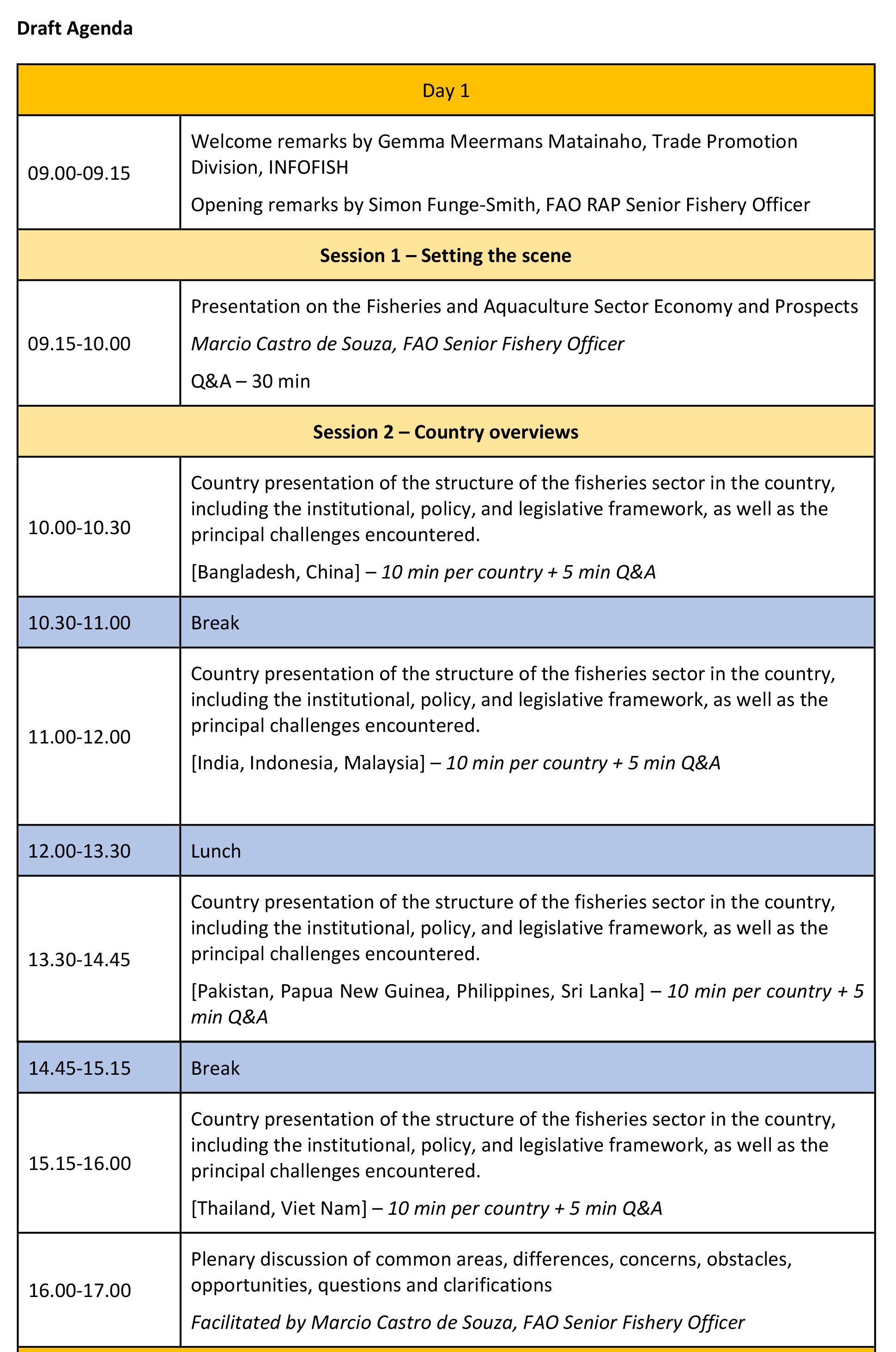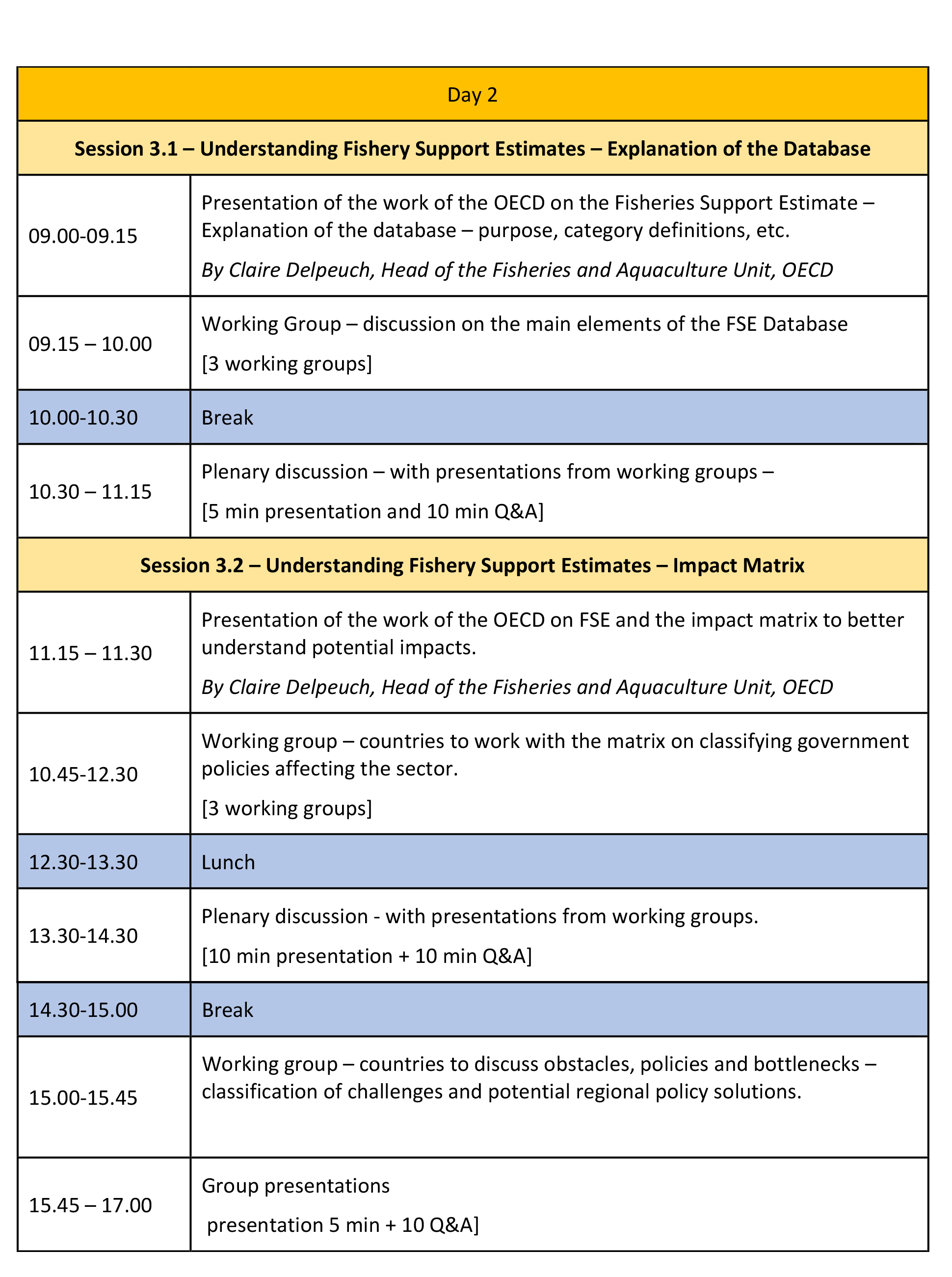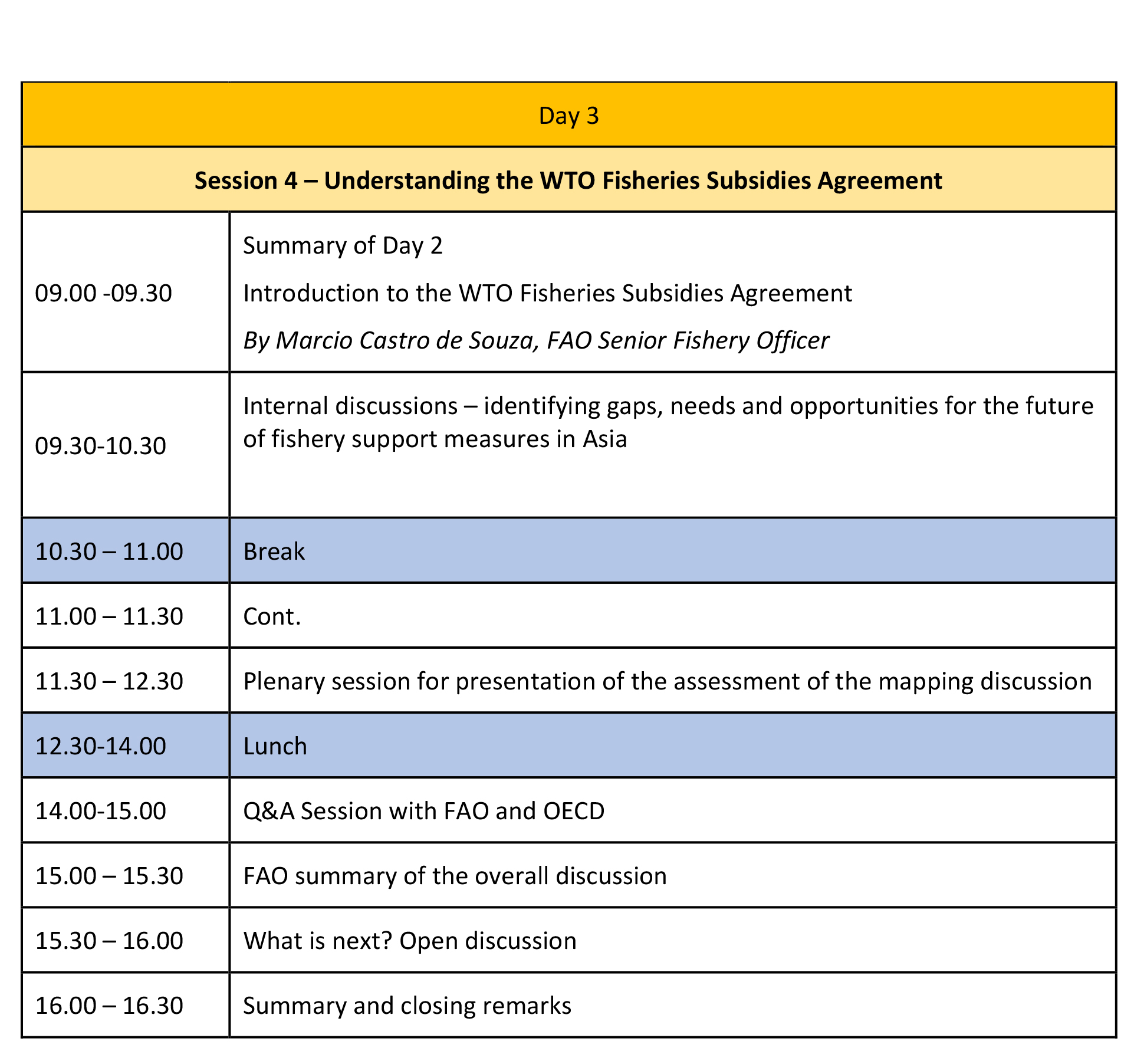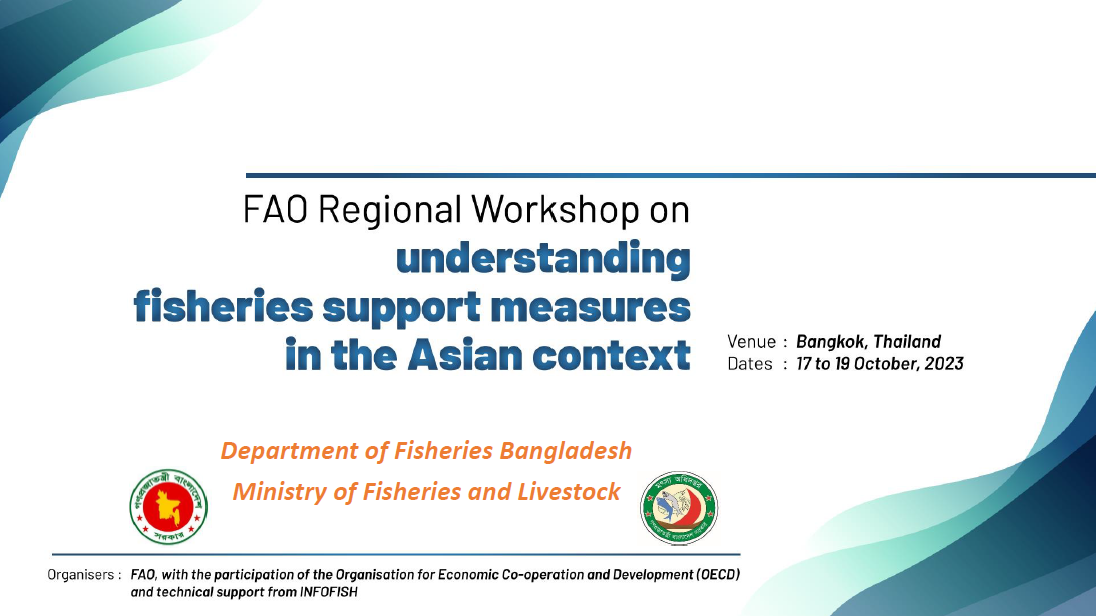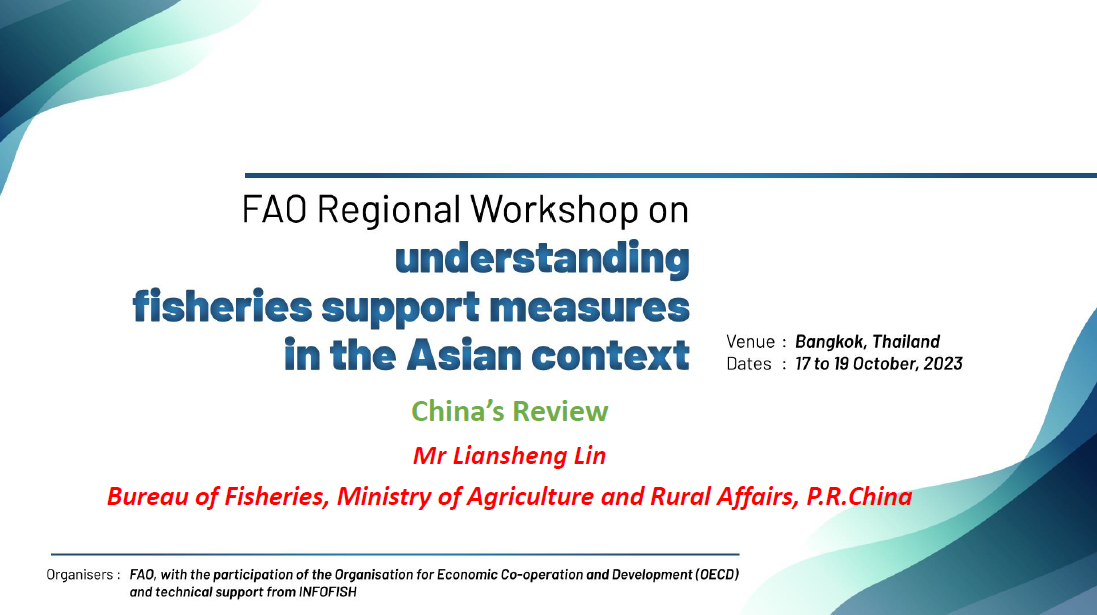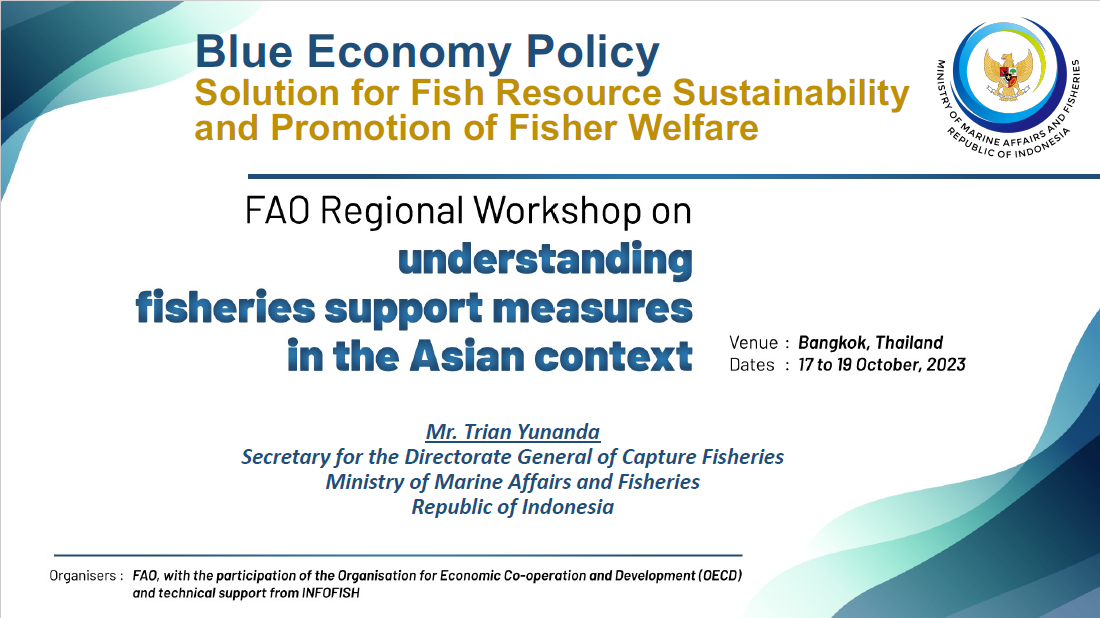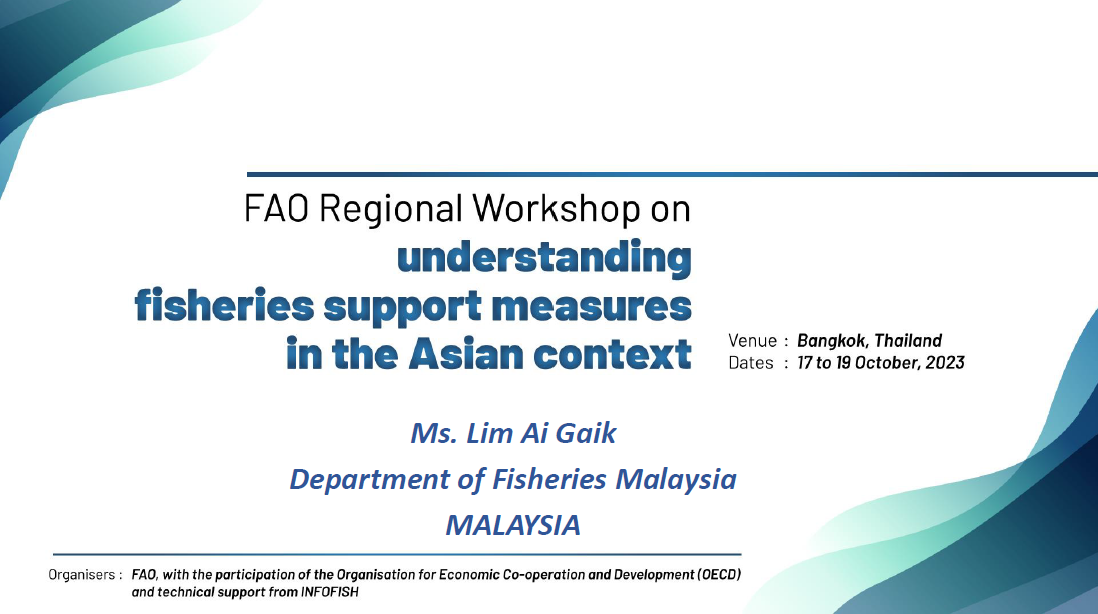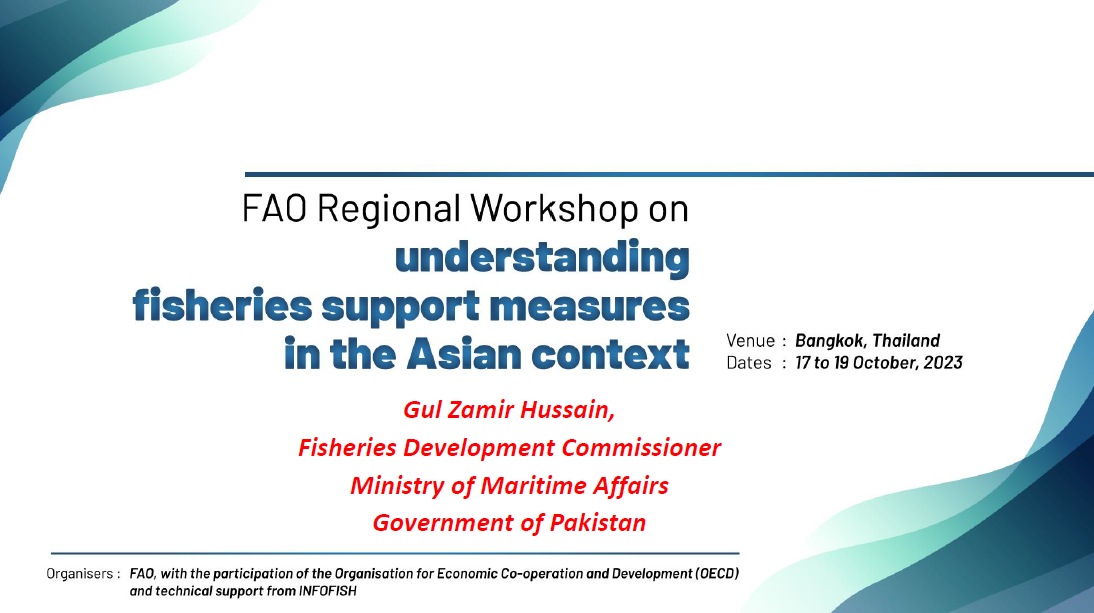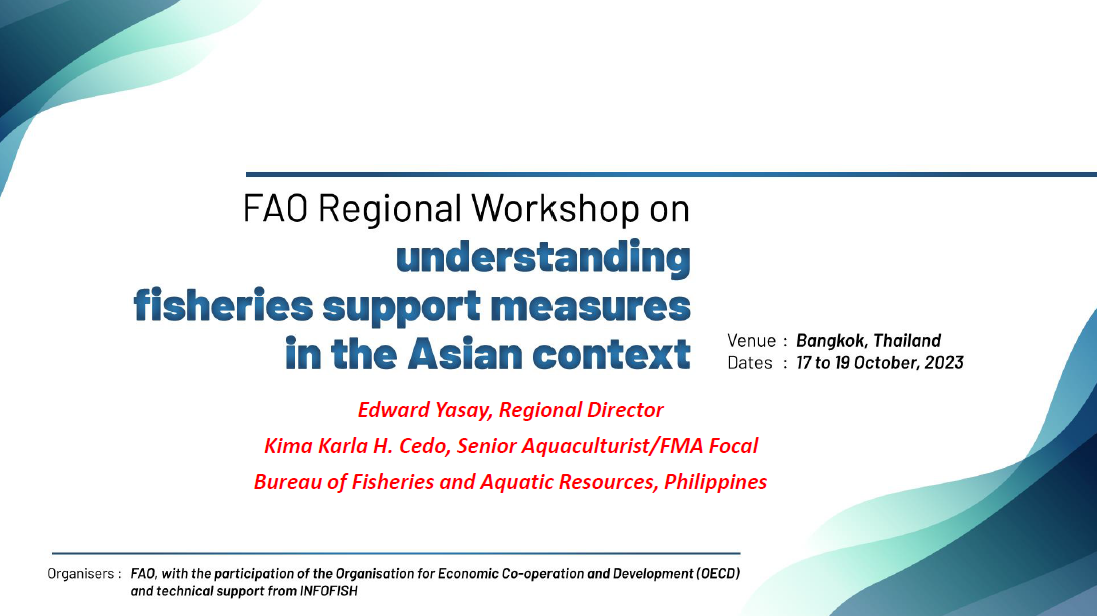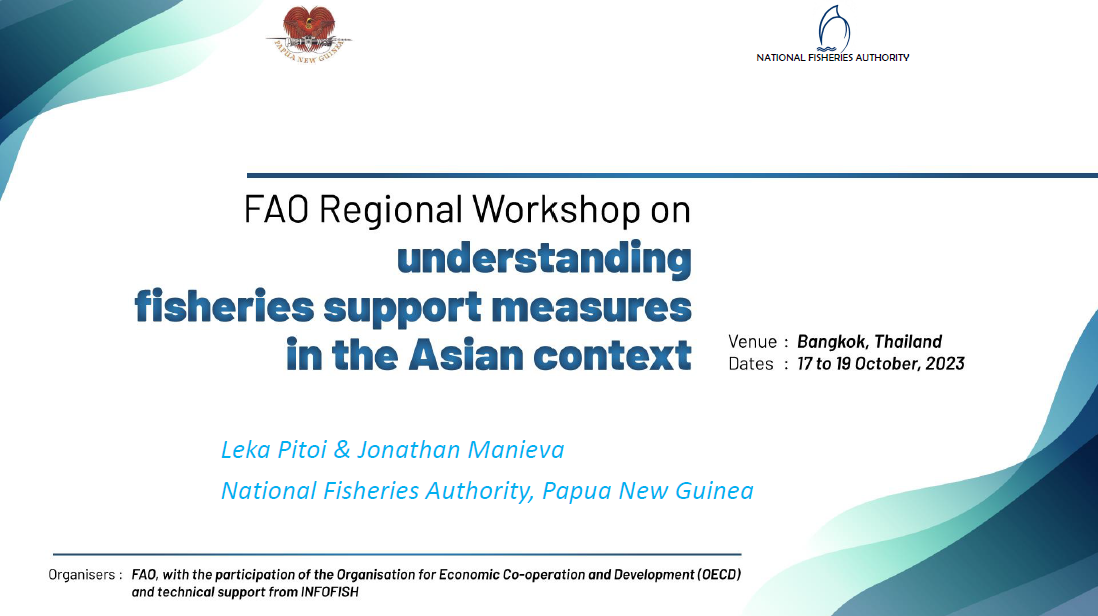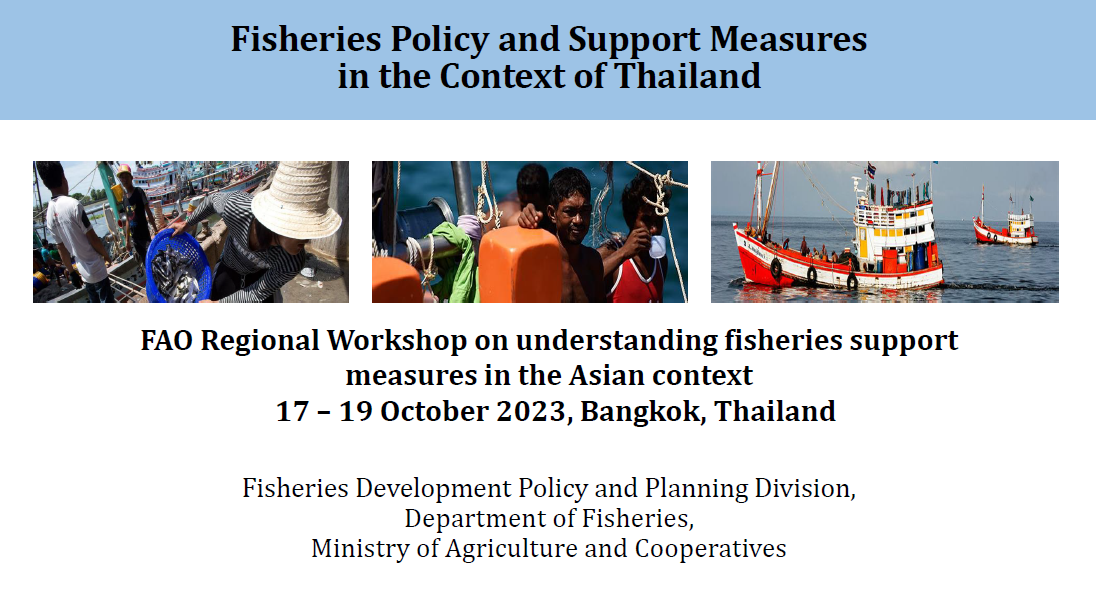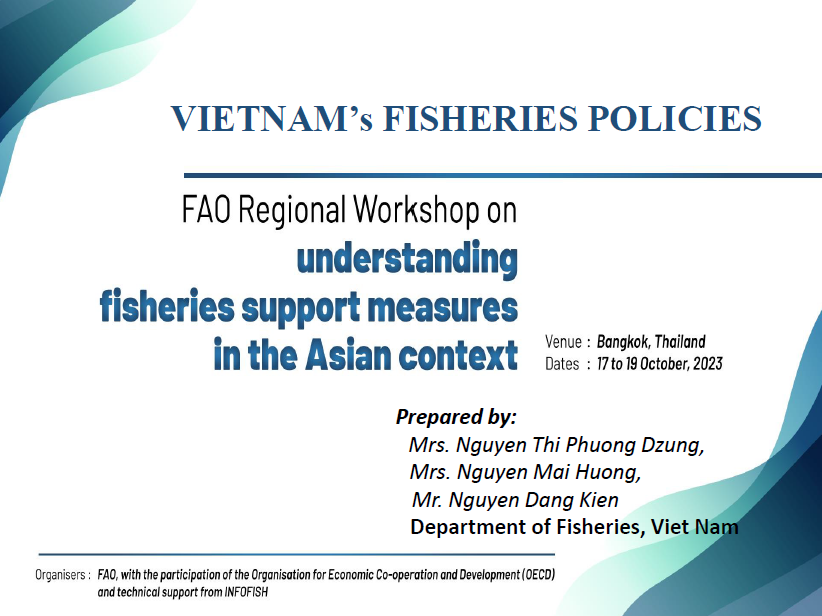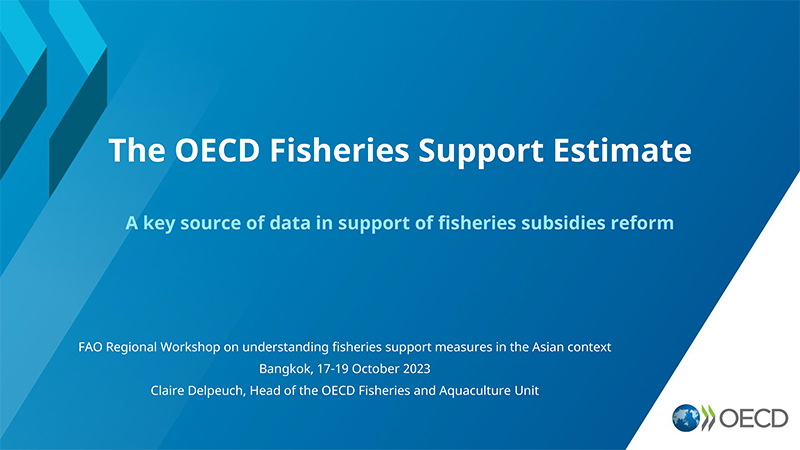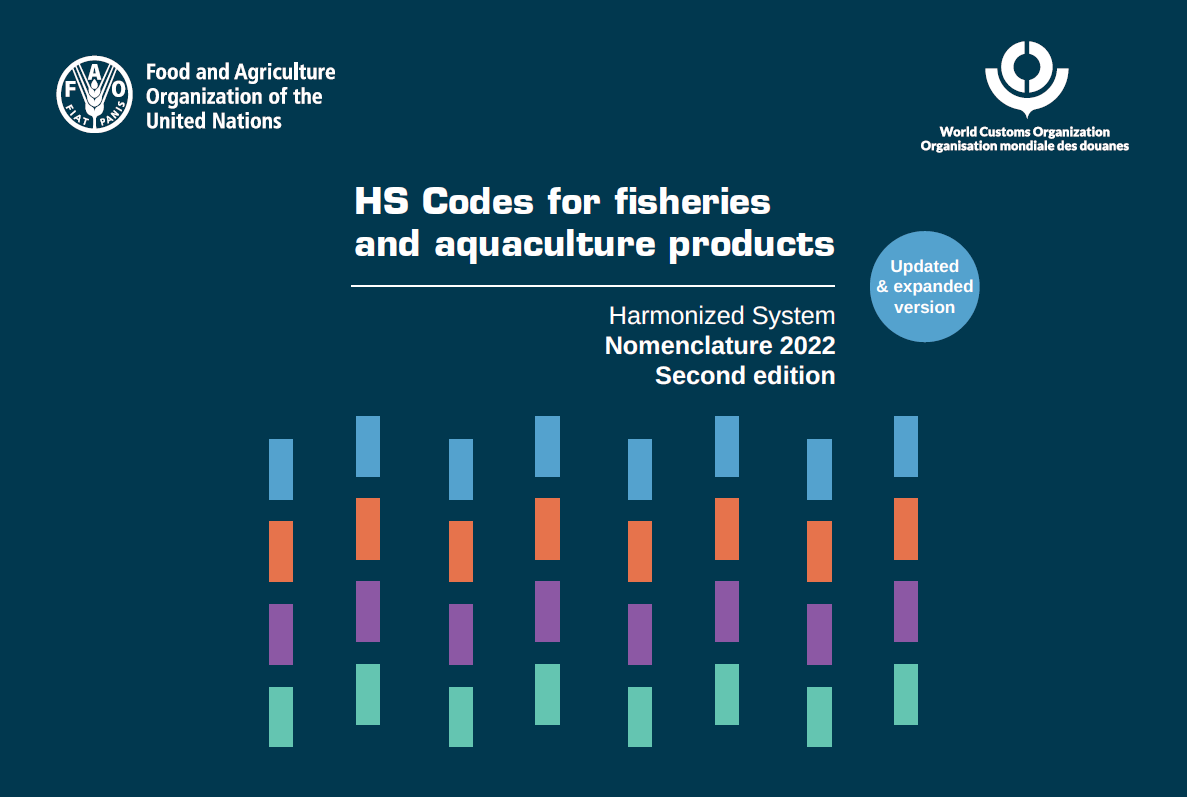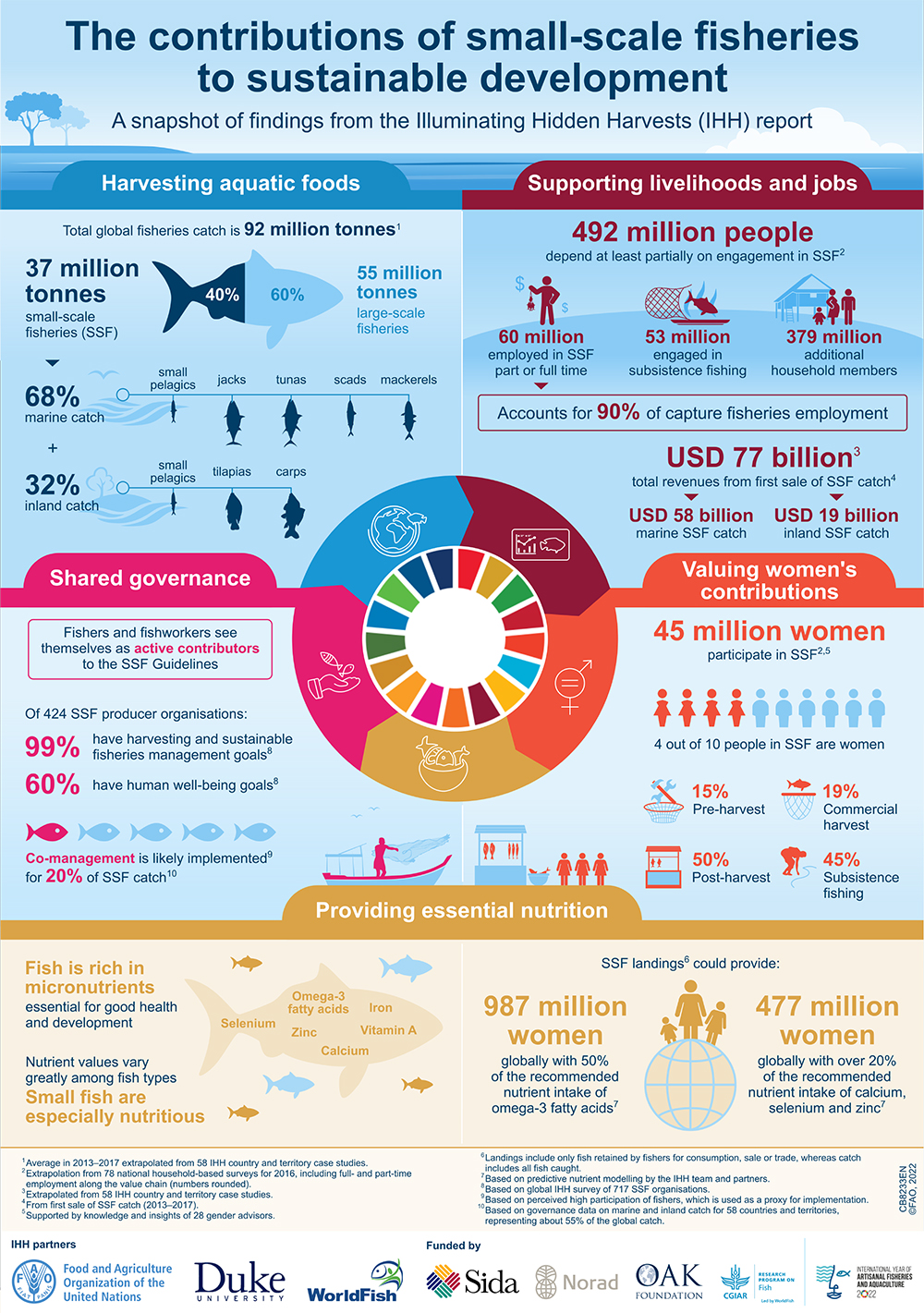
Agenda:
With its abundant marine resources and diversified fishing communities, Asia plays a crucial role in the production and sustainability of global fisheries. According to 2020 FAO data, the Asia-Pacific region accounts for 37 percent of global trade value and 34 percent of global trade volume, exporting USD 56 billion in aquatic products[1] while importing USD 49 billion. Capture fisheries production represented 46.5 million tonnes and aquaculture products represented 77.2 million tonnes of total trade volume. The Asian region (South, Southeast and East Asia) region produced 44.7 million tonnes of fish (excluding aquatic plants) in 2022, which was 49% of total global capture fishery production.
Globally, governments provide an extensive array of fisheries support measures that aim to foster a robust fishing sector, ensuring the livelihoods and food security of millions of people, including in Asia. Although there is no single definition for fisheries support measures, they usually encompass a wide variety of policies, initiatives, and actions implemented by governments to promote sustainable fisheries management, ensure the conservation of fish stocks, and promote the socio-economic well-being of fishing communities.
Support for fisheries comprises a variety of policies that vary in nature and potential socio-economic or environmental outcomes. Typically, it may include financing for fisheries management, data collection and research, capacity-building programmes, market support initiatives, investment in equipment and infrastructure, income support programmes (such as social protection) or direct subsidies for purchasing and modernising vessels or purchasing fuel. These are not mutually exclusive and are frequently implemented in tandem to resolve the multifaceted challenges of the sector and promote its sustainability.
Fisheries support may have both positive and negative consequences for the sector and the resources on which it relies, sometimes unequivocally, sometimes in more contrasted ways. For example, supporting measures for improved management, monitoring, control and surveillance (MCS) can directly and unequivocally contribute to ensuring the health of fish stocks and the sustainability of fisheries when they are implemented effectively. Sometimes, support measures have socio-economic benefits for recipients in the short term. However, they can also increase fishing pressure and potentially harm fish stock health and operators' long-term profitability and resilience due to overfishing, stock depletion, and increased environmental and social costs. This latter support can have additional trade-distortive effects and disadvantages for developing and least-developed countries and small-scale fishers.Considering the myriad of government support measures aimed at ensuring the sustainability of the resources, the resilience of small-scale operators, and the growing pressures on the fisheries sectors globally, there is an increasing need for a better understanding of support policy options, their fundamental characteristics and possible interlinkages, and their primary purpose. In addition, it is essential to differentiate between the categories of policies under consideration and how they contribute towards achieving Blue Transformation[1] and the sustainable use of marine resources. In this context, the OECD has developed the Fisheries Support Estimates (FSE) database[2], which builds on a comprehensive and transparent framework to map and describe fisheries support policies across countries and time to understand better the support provided to the fisheries sector.
[1] A roadmap for Blue Transformation is available at https://www.fao.org/3/cc0459en/cc0459en.pdf.

